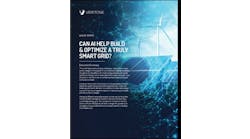Here in Portland, Ore., the words “light rail,” “streetcar,” “public transportation” and “electric charging stations” are all part of our everyday language.
And so it came as no surprise that the city of Portland ranked second in a report by ACEEE as a best place to find energy efficiency work. In the report, Portland was the shining star of transportation—for good reason.
The city boasts the Max light rail system, with 84 stations and 52 miles of track connecting the city, airport and region. It has become a national model for more than just transportation—but planning, public art and environmentally friendly construction practices. In addition, more than $6 billion in development has taken place along the lines.
Here in Portland, if you want to get to the airport quickly and inexpensively, the Max is the way to go. If you want to go to the zoo and avoid the crowded parking lot, you take the Max. Along the way you’re treated to Portland’s lumberjack-meets-tattoo parlor fashion.
“Try leaving your car behind when visiting Portland; its efficient and low-cost public transportation system, TriMet, is a daily parade of independent fashion (tattoos! piercings! lumberjack boots!),” wrote cntraveler.com about Portland.
The Portland streetcar, launched by then-Mayor Vera Katz in 2001, was the nation’s first modern-day streetcar. It travels through downtown and popular shopping districts, and was recently extended to add 3.3 miles and 28 stops. If you want to spend the day shopping downtown or finding your way to one of the many festivals on the city’s waterfront, the streetcar is a top option. Along the way, you can jump out and shop for children’s clothing made from organic cotton or visit one of the city’s many LEED-certified buildings.
Biking is a big priority in Portland, and the city recently installed bike lanes in many parts of the city. Here in The City That Works, you’ll see bike commuters peddling over Portland’s many bridges, even during the windiest, rainiest weather. It’s very common to see parents transporting their raingear-insultated (R-72, no doubt!) children to school on bikes equipped with seats or trailers.
Even the buses show off the city’s innovative transportation practices, adorned with billboards that boast that the buses are powered with biodiesel mixes.
And if residents aren’t biking, riding the max, or getting to work in green-fueled buses, they may be charging their Smart Cars at some of the very visible downtown electric-car charging stations, including one located at Portland General Electric’s headquarters.
However, for a resident who carts her kids to soccer games in a ho-hum PZEV Subaru instead of an electric-powered bike or car, Portland’s enthusiasm for all things green spawns a fair amount of guilt: I should be loading my super-insulated kids onto a bike in the morning, or cramming them—and the dog–into one of those cute little Smart Cars! Or maybe I could convert the dog’s waste into biofuel and invent a car that will run on it. Such thoughts ensure that my car trips are short, that I turn off the car rather than idling, and that I take public transportation to the zoo. Portland-inspired guilt also ensures I buy Energy Star appliances and LED lightbulbs.
The guilt factor: Is that what’s behind the City That Works? If so, it’s working.






